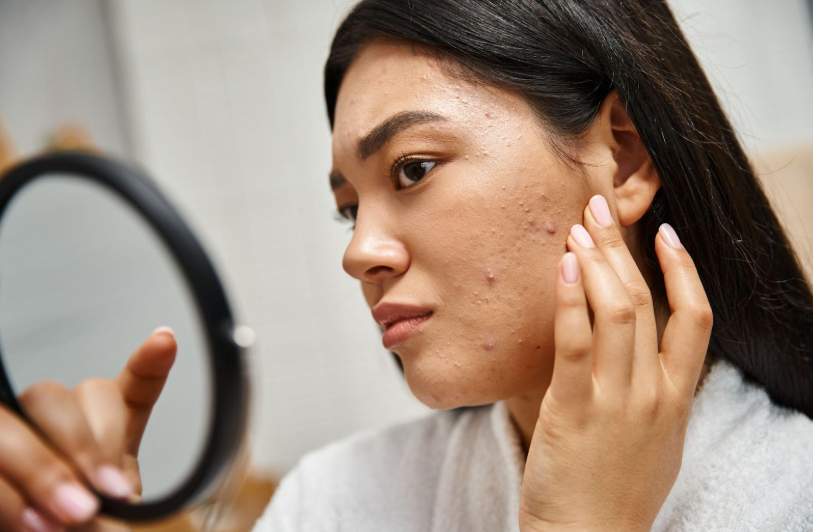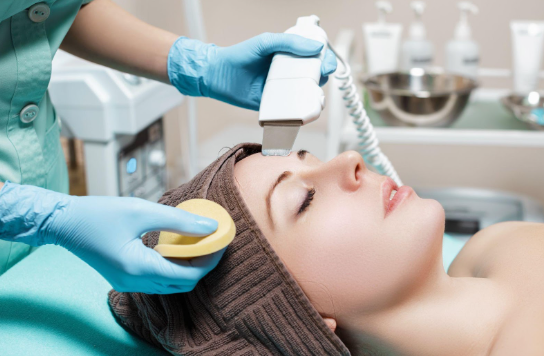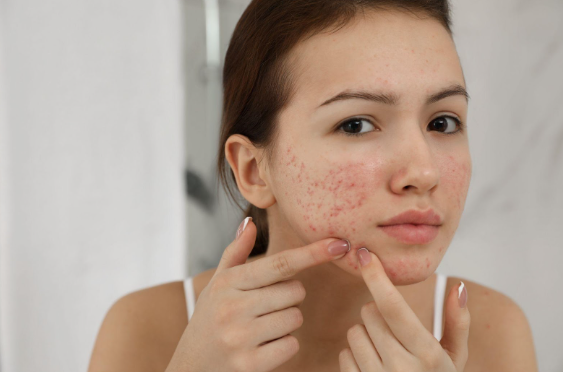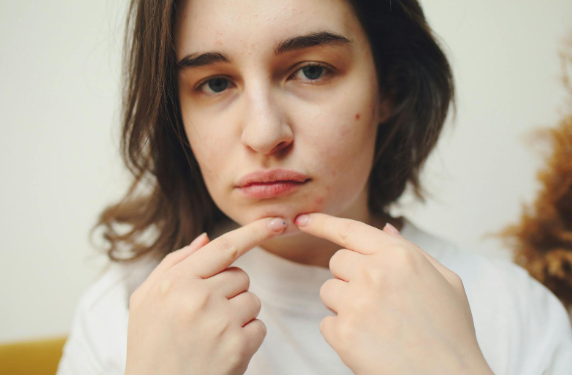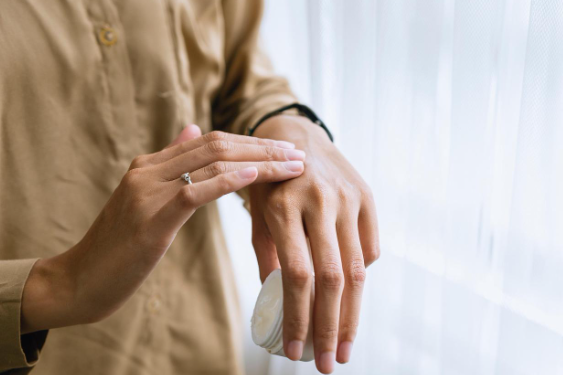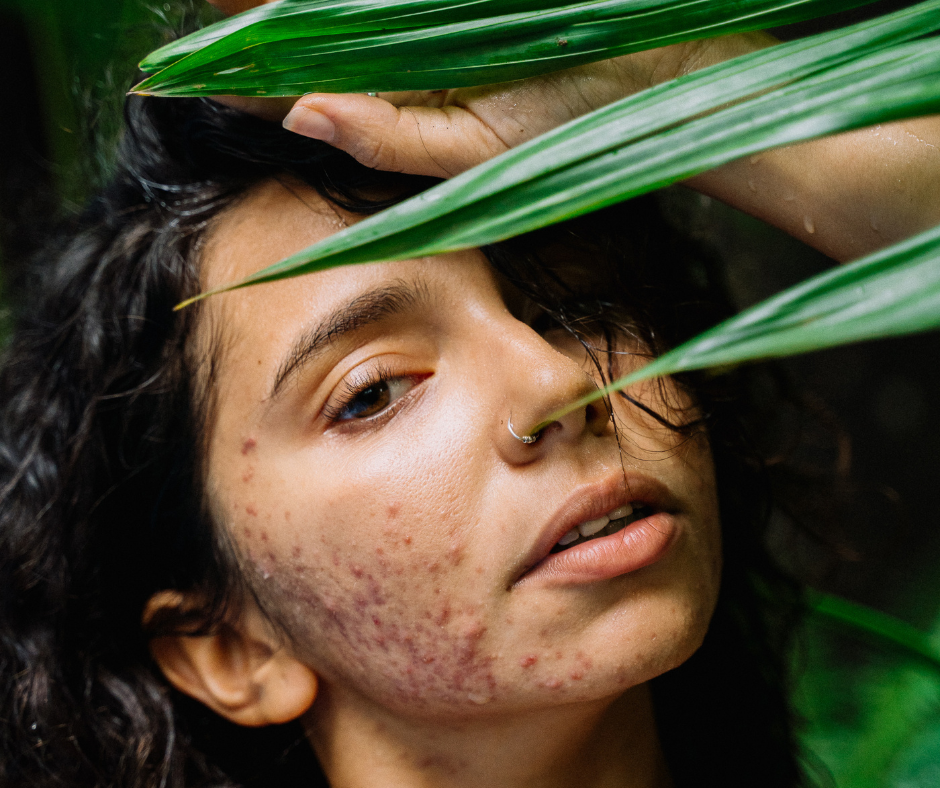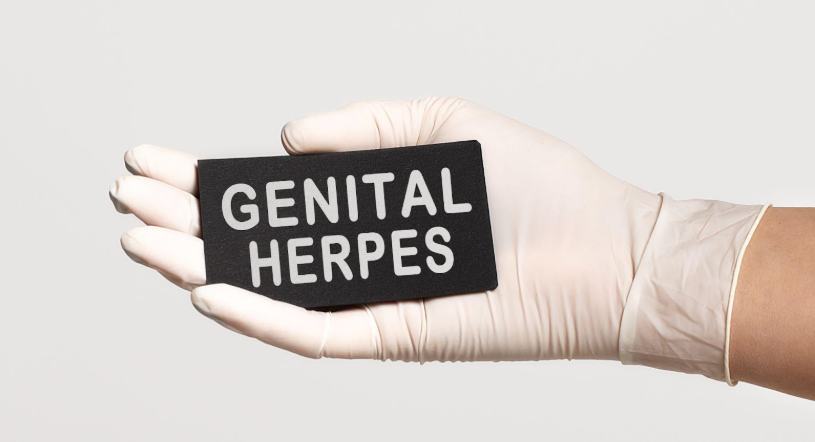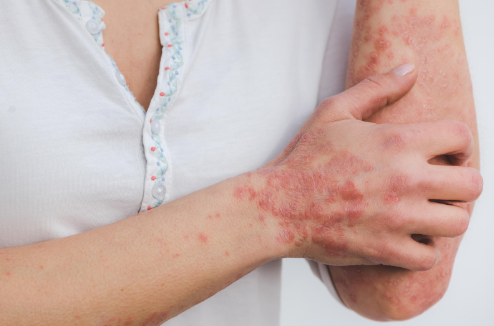What Are Razor Bumps & How to Treat Them | Pinebelt Derm

Have you ever shaved your skin and expected it to feel soft and smooth, but instead got hit with bumps, and then ingrown hair? If you have, then you know the pain of razor bumps, also called pseudofolliculitis barbae (PFB), shaving bumps, barber’s itch, or folliculitis barbae traumatica.
While razor bumps can be incredibly inconvenient and just plain annoying, that’s not all they are. If your razor bumps are left untreated, they can cause permanent damage to your skin. Fortunately, there are several treatment options available that you can try.
Keep reading to learn everything you need to know about pseudofolliculitis barbae, and how to prevent or treat them.
What Is Pseudofolliculitis Barbae?
Pseudofolliculitis barbae is a chronic irritation or inflammation of the hair follicles and the surrounding skin. This can be caused by two reasons—the hairs penetrate the skin before leaving the hair follicle, or leave the follicle and then curve back into the skin.
Instead of growing straight out from the follicle, the hair grows at an angle. This causes it to meet resistance from dead skin cells at the pore opening, which causes it to curl back inside, causing painful and inflamed bumps.
PFB appears similar to folliculitis (inflammation of hair follicles due to inflammation) but is not caused by infection. Typically, it is seen on the face and neck of men who shave, but it can affect men and women of all ethnicities in any body part. Areas of the body with thick, coarse hair and areas that are often subject to hair removal methods like shaving, waxing, and tweezing are more likely to experience razor bumps.
Pseudofolliculitis barbae is most commonly due to shaving—particularly close shaving since the hair can easily retract beneath the surface of the skin. It is most common around the beard and neck, hence the term “barbae” (barba is the Latin word for beard). It can also occur in areas where there are skin folds or scars.
Since it can be caused by several factors, there is no particular cure. However, it can be prevented, managed, and treated in many ways.
The Link between Pseudofolliculitis Barbae and Dark Skin
Although anyone can get razor bumps, it is more common in individuals with tightly curled or coiled hair since curly hair is much more likely to turn back on itself and become ingrown.
Studies show that 45% to 95% of African American men will experience pseudofolliculitis barbae at some point in their lives. Hispanic, Asian, and Middle Eastern people also present higher chances of experiencing PFB, especially for those with hirsutism and who regularly shave their pubic area.
Symptoms of Pseudofolliculitis Barbae
The most common symptom of pseudofolliculitis barbae, or razor bumps, is in the name itself—bumps on the skin. These bumps are usually red, irritated, and can resemble acne. It can also present as ingrown hairs associated with small flesh-colored or red follicular papules.
Other symptoms include:
● Itching.
● Pain.
● Pustules.
● Post-inflammatory hyperpigmentation (darkening of the skin).
● Scarring (including keloid scarring).
In some cases, pseudofolliculitis barbae can result in folliculitis, if the hair follicles get too irritated or inflamed. It can also be further aggravated if the individual suffers from any coexisting eczema or dermatitis.
Where Can You Get Pseudofolliculitis Barbae?
You can get pseudofolliculitis barbae anywhere that you shave, wax, tweeze, or even chemically depilate hair (in some cases). However, PFB occurs much more commonly from shaving.
Razor bumps are usually present in the following areas:
● Face (particularly the skin under the jawline, neck, and lower cheeks).
● Underarms.
● Legs.
● Groin.
How to Prevent Razor Bumps
The most effective method would be to let the hair grow, but that’s not always possible. However, there are steps you can take to prevent or minimize your chances of getting razor bumps:
● Moisten your skin with a warm, wet washcloth before you shave to help open the pores and soften the hair.
● Use a non-irritating shaving gel or cream.
● Always shave in the direction of hair growth, not against.
● Avoid shaving too close to the skin.
● Use an electric razor.
● Don’t stretch the skin while shaving.
● Avoid shaving over the same area multiple times.
● Don’t press the razor too hard into the skin.
● Replace your razor frequently.
● Try not to shave daily. Instead, shave every other day or less.
● Use a moisturizing cream regularly, and exfoliate to keep your follicle openings clear.
How to Treat Razor Bumps
Pseudofolliculitis barbae is a chronic condition, but some treatments can help reduce its effects. While preventive measures are the best way, with appropriate grooming techniques and different treatment options, PFB can be managed.
Since PFB is caused by the inflammatory response of the body to a foreign object (ingrown hair), the first step should be aimed at that. In other words, people with PFB should stop shaving the affected area for a minimum of 4 weeks to allow the ingrown hairs to break through the epidermal cover and reach the surface. Additionally, most PFB papules and pustules were found to disappear after one month of continuous hair growth.
At-Home Treatment
Some natural remedies can be useful when it comes to managing the symptoms and spread of pseudofolliculitis barbae. These include:
- Aloe Vera
Aloe vera is known to soothe burns and heal wounds thanks to its antibacterial properties. It is also moisturizing and anti-inflammatory, allowing it to reduce itchiness, swelling, and redness.
2. Tea Tree Oil
Similar to aloe vera, tea tree oil also has antibacterial and anti-inflammatory properties. It is commonly used to treat skin conditions like eczema, itchy skin, inflammation, acne, psoriasis, and more.
However, remember to dilute the tea tree oil instead of directly applying it to the skin. Direct application can sometimes result in irritation or an allergic rash, so dilute the oil with a carrier oil first.
3. Exfoliation
Exfoliating the affected area can help you remove any dead skin cells that may be clogging up pores. Both store-bought exfoliators and homemade exfoliators can be used for this purpose. Gently rub the exfoliator over the affected area in a circular motion for a few minutes before rinsing.
4. Chemical Depilatories
Chemical depilatories don’t cause as many issues as when compared to manual razors, and so can be a preferable choice for those who prefer a closer shave. Chemical depilatories can be quite strong depending on the brand and the type, so ensure to read the product instructions carefully to avoid any irritation or burns.
Medical Treatment
Some pharmacological drugs or lotions can help minimize the symptoms of PFB.
- Antibiotics
Although the initial development of PFB doesn’t involve bacteria, continued irritation and inflammation can lead to a secondary infection. In this case, prescribed antibiotics or antibacterial lotions can be used to treat the affected area.
2. Corticosteroids
Corticosteroids are a common treatment for skin irritation and inflammation—both characteristic of PFB. Most steroid treatments for PFB include a topical steroid cream that is applied daily.
3. Benzoyl Peroxide
Benzoyl peroxide has antibacterial effects and also helps reduce inflammation and hyperkeratosis (thickening of the skin’s outer layer). It is used both alone and in combination with topical corticosteroids or retinoids to reduce PFB.
Surgical Treatment
Surgical options for PFB can be an effective option for some people. These include:
- Chemical Peels
Chemical peels with a high concentration of glycolic or salicylic acid can be beneficial in the treatment of PFB. Both of these agents are highly effective exfoliants and can help the hair grow straighter, reducing the potential for ingrown hairs.
2. Laser Therapy
Laser hair removal involves removing the hair follicle to stop new hairs from growing and is the closest thing to a cure that currently exists for PFB. Different laser epilation systems can be used for different skin types, but laser therapy can typically take several treatment sessions.
3. Electrolysis
This is another hair removal technique that is usually done by a dermatologist. It works by inserting an epilator device into the skin that uses shortwave radio frequencies to make existing hair fall out and stop new hair from growing.
Complications from Pseudofolliculitis Barbae
PFB is not life-threatening but can result in more and more complications the longer it’s left untreated. When treated early, most of these serious complications can be avoided. The most severe complications include hypertrophic scarring, postinflammatory hyperpigmentation (PIH), and keloid formation that results in cosmetic disfigurement.
When You Should See a Dermatologist
If you find that you have recurring bumps, it’s definitely time to visit a dermatologist. Since PFB can closely resemble tinea barbae (a fungal infection of the hair), it’s important to consult a professional to ensure that you receive the right treatment. In addition, leaving PFB untreated can lead to further complications or permanent scarring of the skin.
Pseudofolliculitis barbae can be difficult to deal with, and if left untreated, can result in several complications that can reduce your quality of life. At Pine Belt Dermatology, MS, we’re dedicated to offering the best dermatology and cosmetic services to fulfill all your needs. To get in touch, check out our locations, or request an appointment today.
